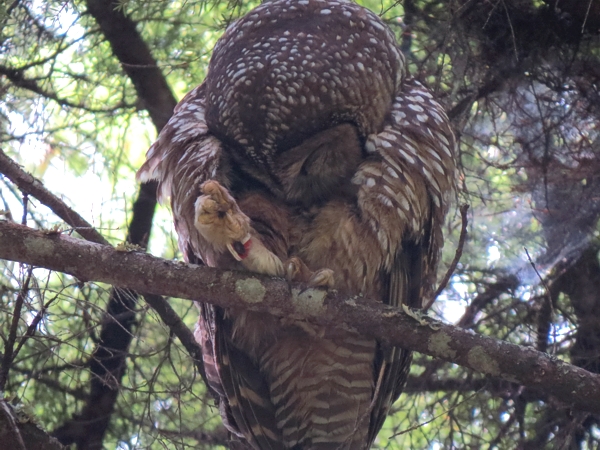I have realized that a large part of the draw of birding for me is the social aspect. I played sports in High School and College. Most "retired" athletes that I talk to reminisce about the workouts, and the competition, and the incredible shape that they used to be in. They also reminisce about what they really miss: the team. They miss the bus rides, the shared experiences of winning and losing, and working together. They definitely miss the nerding out as a group. And trust me, even jocks nerd out. Just turn on ESPN.
This isn't really any different that any social group. And it especially isn't different for birders. Sure, we all know of the "lone ranger" type who reports rarities from far-flung corners of the state. "Find your own damn birds," we imagine them saying as Eskimo Curlews fly around their heads. I often think of myself this way as I hike off into the morning mist, camera at my hip, scope over my shoulder, and bins at my chest. While I sometimes prefer to bird this way, I doubt that anyone could argue about how much birding is a social hobby as much as a personal on. And a Birding Festival is as much social as it is about the birds. People with similar interests sharing experiences. How very human.
My mid-year blues started a little early. No matter how much brush-beating I did I couldn't turn up anything rare. The damn broke when I found a BLACK TERN, and a YELLOW-HEADED BLACKBIRD at Ford's Pond early on Saturday May 26. I was scoping for ducks when the BLTE flew into view. I was elated, as I hadn't found any ebird records for BLTE in the county. Later, Matt Hunter told me he hadn't heard of one in the county since the 80s. As I skirted the edge of the pond to get a better shot, an unmistakable call notified me to the presence of a YHBL. It flew in and fed extremely close, but I got "buck fever," nearly dropped my camera, and couldn't manage to get a good shot. I later got a poor shot of it feeding out in the pond.
Hard to get in focus, but here it is.
An even worse shot. The yellow bit is the head. It's feeding upside down.
After that I zoomed to the coast to look for SNOWY PLOVERS at Tahkenitch Estuary north of Reedsport, Oregon. After getting overly excited by some Killdeer, I came upon three squabbling high above the "wet sand." I got my camera ready, and one strolled down onto the unrestricted area where I managed to get a shot of one, of all places, near a tire track.
Snowy Plover on a Foggy Day
The next weekend Matt Hunter and I went high into the Cascades to look for Green-Tailed Towhees, Calliope Hummingbirds, and Canyon Wren. While we missed on all three, we ended up finding something just as good.
Photos by Matt Hunter
Photos by Matt Hunter
Photos by Matt Hunter
At an undisclosed location we heard the begging call of a female. We followed the sound, and were rewarded with amazing looks at this beautiful, but controversial, bird. Coolest of all, when we reported the finding to SPOW researchers, they told us that this was one they hadn't relocated since they banded it as a juvenile. Neat!
The following weekend I got to help co-lead tours at the Oregon Birder's Association Annual Meeting and Festival. I helped lead a group to North Bank Habitat Management Area outside of Glide, Oregon, where we had fleeting looks of a BLACK-THROATED SPARROW.
The same day, Matt's group found a RED-EYED VIREO which I managed to chase and re-find, but again, I didn't manage a picture. These were both great birds for my county big year which I didn't expect to find. Three birds I did manage to see that I have been looking for did show up, and they couldn't escape the camera of "Shaky-Slow Hands Billstine, slowest draw in the west."
Blue-Winged Teal, a year bird I have spent a lot of time looking for.
Tricolored Blackbird. Notice the pointed bill, glossy black body, and white-and-red epaulette.
Vesper Sparrow, a local west-side specialty for Douglas County
So why the mid-season blues? Birds aren't coming as fast as they did at the beginning of the year, but I am still finding good ones. Any notable misses I have had I still have a "second-chance" for this fall and winter, though some are slim second-chances. Overall, I am enjoying myself, and feel good about my chances on hitting my goal for the year.
Beginning of year goal: 245
Current Total: 217
County Record: 265




























